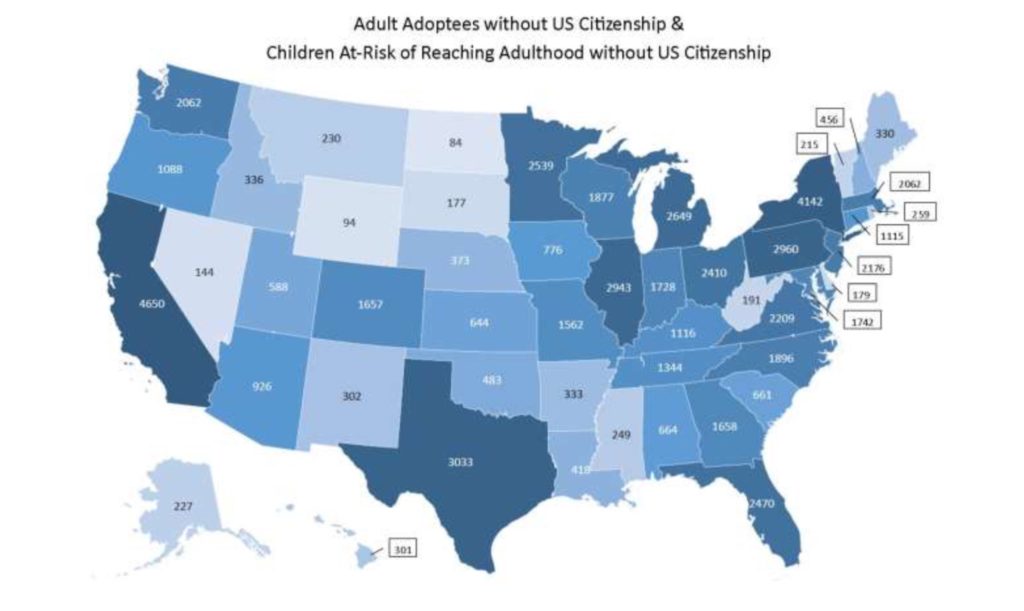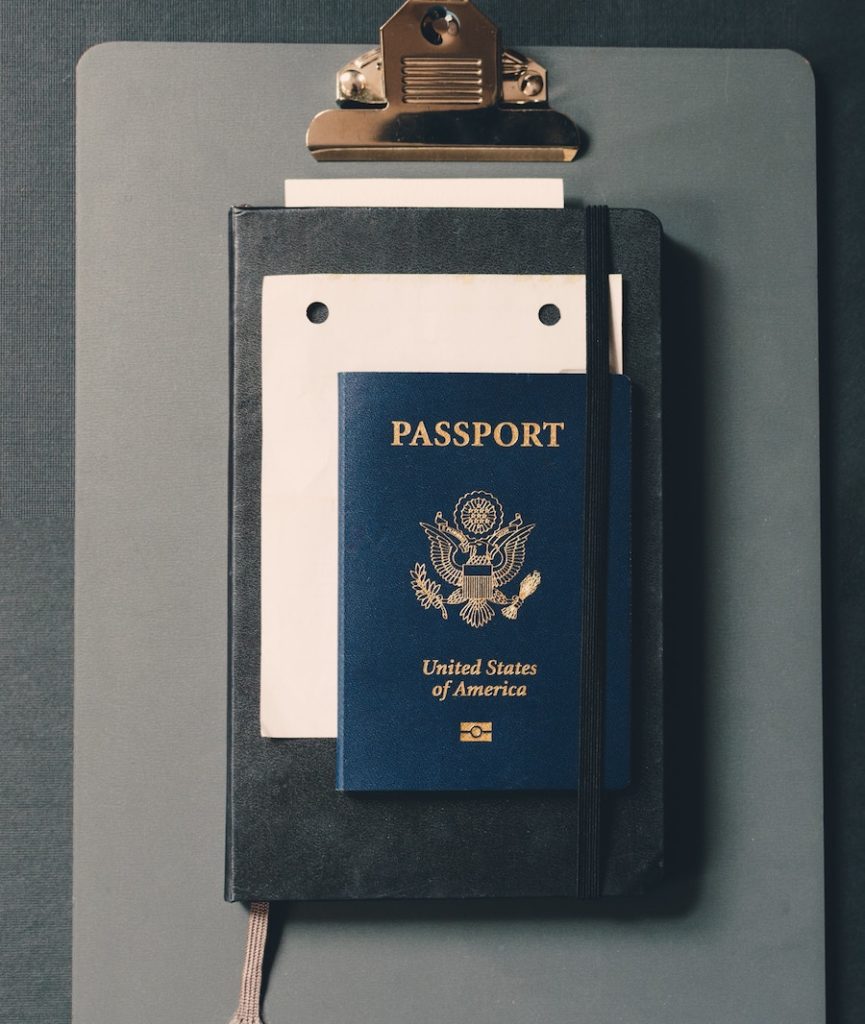As an adoptive parent, the recent ICE raids have left me more than a little uneasy. Across almost all the adoption boards I’m on, in any social media channel, I’m seeing parents ask what documents they need to ensure their child’s adoption status is safe.
The fact is this: it’s estimated that as many as 49,000 adopted children are undocumented because their parents didn’t file or mis-filed the necessary forms, often due to incomplete guidance from agencies. The Adoptee Rights Campaign asserts that nearly 15,000 adopted between 1999 and 2016 may be at risk for reaching adulthood without US citizenship.
So I reached out to Anna Caudill, an advocate for internationally adopted kids with special needs, and asked her to share the advice she’s gleaned as an adoptive mother of two, and through her work as the Executive Director of PALS (Post Adoption Learning Services).
She shares the documents you absolutely need to have on file — get that Certificate of Citizenship, now! — and how to equip your adopted kids so they can prove their own citizenship.
Of course, I hope it never comes to that. But right now we’re all feeling like everything is a possibility. – Kate
Please note: Although Anna consulted with Tifany Markee of San Diego immigration law firm Milner & Markeeon this article, Anna is not an immigration attorney and this post should not be considered legal advice.
If you’ve adopted and have questions, please consult your adoption agency or attorney.
Related: 10 of the best, thoughtful gifts for newly adoptive parents and their kids

image: Adoptee Rights Campaign (PDF)
———-
What Documents Does Your Adopted Child Need for US Citizenship?
Anna Caudill, Guest Contributor
Nine years ago, I adopted my second son from China. Having done it before, I naturally assumed I knew everything about the process. But when the Customs and Immigration agent declared that Fu was coming to the US on a green card, I realized I’d overlooked an important detail on his paperwork.
Turns out, Fu’s visa was marked IH-4. It should have been marked IH-3, which grants automatic citizenship on entering the US.
Luckily, I was able to fix it — although it was difficult and required a 4-hour drive to the closest immigration office.
If you’ve also adopted internationally, or are in the process right now, here are the essential steps you must take in order to secure your child’s citizenship status in the US.
Step 1: Check your child’s visa type (IR3/IH3 or IR4/IH4)
 Image: USCIS
Image: USCIS
The Child Citizenship Act of 2000 sets citizenship guidelines for children adopted internationally. It’s a complicated document to read. (Thus, the need for immigration attorneys). However immigration attorney Tifany Markee offers this easy-to-remember saying:
IR3 or IH3, you are free.
IR4 or IH4, there is more.
Simply put, kids who enter the country with IR3 and IH3 visas are US citizens upon entry and will receive their Certificate of Citizenship by mail after their arrival. Those with IR3s and IH3s are free to relax, because they have proof of their US citizenship once that certificate arrives.
However, kids who arrive with an IR4 or IH4 visa haven’t quite finalized the citizenship process. There’s varying reasons; perhaps just one parent traveled, or the child was brought by an escort to a US airport, for example. Whatever the reason, this makes the adoptee a “Permanent Resident” on entering the US, not a citizen and so there is more you’ll need to do.
Related: 7 parent bloggers share their own immigration stories. Wow.
Step 2: Readopt your child in the US
 Photo: Blake Barlow via Unsplash
Photo: Blake Barlow via Unsplash
Let’s get into more detail about readopting your child in the US.
Even though the saying goes, “IR3 or IH3, you are free,” you should definitely complete a state-level “readoption” or “recognition of foreign adoption” no matter which visa your child entered on. It’s required if you entered on an IR4 or IH4, but definitely good practice in either situation.
Your local county courthouse will be able to give you the appropriate paperwork to complete it, but you can start by checking the Child Welfare Information Gateway’s excellent explainer that gives the requirements for every state.
After you readopt your child here, apply for your Certificate of Citizenship through your child’s US passport, or by filing an N-600 form. This shrinks a child’s entire immigration file (remember all that paperwork?) to one single piece of paper that makes your child’s future much less complicated.
What’s the deadline for readopting?
With the current political climate surrounding immigration, the sooner you get this done the better you’ll feel.
But if you need a deadline, make sure you have all the necessary records for readoption by the time your child turns 17, so their adoption status can be finalized before they’re 18.
Note that if your child entered on an IR4 or IH4 based on guardianship, you need to readopt before they’re 16 for automatic US citizenship to kick in.
Also note that an adoptee with a Certificate of Citizenship gets into legal trouble after turning 18, certain criminal offenses can trigger deportation proceedings if they don’t have proof of US citizenship or if their Green Card has expired.
Remember: Until you do more to the IR4, your child is a Green Card holder and therefore a permanent resident, not a US citizen.
Why readopt in your state, when you already completed it overseas?
What if your child is already a citizen with a Certificate of Citizenship in hand? Finalizing readoption in your state is still really important. It completes the legal adoption on a local level, meaning your state court or Office of Vital Records will maintain copies of the documents you provide.
If your original adoption and immigration documents are lost or destroyed (think, house fire or young adult with poor organization skills) you or your child can still access those copies through your state court.
Readoption can also make it easier when it comes to school enrollment, health insurance, air travel, voter registration, conservatorship, driver’s license, and estate planning.
Related: Migrant children in crisis: Know these stories. Please, don’t turn away.
Step 3: Equip your adopted child to prove their citizenship to ICE agents
 Photo: Kelly Sikkema
Photo: Kelly Sikkema
I’m horrified that I even have to write this headline, but as an adoptive mom, I have felt that cold hand of fear rise up to steal my breath watching the recent news about ICE raids, detentions, deportations, and family separation.
While my own teenage boys have citizenship certificates and recognition of foreign birth, what if they were out in public and an official asked them about their immigration status? What if they made some dumb choices and got in trouble with the law? What if they were in college and traveling with friends? How could they show proof of citizenship?
Here’s what you should do:
Take photos of your documents. I took photos of my sons’ citizenship certificates with my phone, with their dad’s phone, and with each of their phones.
Keep copies on hand. Each child keeps a color copy of their citizenship certificate in their own wallet. You can reduce it to driver’s license size so it fits. I think it’s also a good idea to laminate it.
Apply for a passport card and always carry it. You can apply for a passport card from the State Department. Your child should carry it like they would a school ID. If your child has a Permanent Resident card, they should carry it at all times as well.
What if your child has already turned 18?
If your adoptee is an adult, or if you didn’t do readoption or naturalization before they turned 18, check out the Adoptee Rights Campaign.
You can also find information on rights and where to find help via the Informed Immigrant website.
While I offer my experience and knowledge, I’m not an attorney, so of course this is not intended to be legal advice and shouldn’t be relied on in the place of advice from an attorney. If you have questions, trust your gut and find an immigration attorney familiar with international adoption matters!
Anna Caudill is an advocate for education rights for internationally adopted kids with special needs. You can see more about her work at PALS: Post Adoption Learning Services.
Top image:Steven Van Loy via Unsplash






Another step is to ensure your child is listed as a citizen with the Social Security Administration.